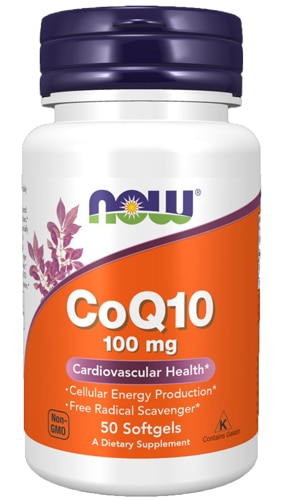Each February, the National Heart, Lung and Blood Institute (NHLBI) celebrates American Heart Month by motivating Americans to adopt
healthy lifestyles to prevent heart disease. Cultivating a cardio-nurturing lifestyle can reduce our risk of heart disease, heart attack, and stroke as well as dangerous associated risk factors, including high blood pressure, elevated cholesterol, type 2 diabetes, and obesity.

Fortunately, our bodies tend to be highly responsive to
heart-healthy diet changes. The key, of course, is to implement them. For those who generally know they should eat healthier but struggle nonetheless, perhaps it is a question of knowing
how to easily incorporate better daily food choices. Here are some simple, effective ways to transform your menu for optimal cardiovascular wellness.
Heart Healthy Eating Strategies
Emphasize plant foods
Kim Williams, M.D., a renowned cardiologist, has often quipped: “There are two kinds of cardiologists:
vegans, and those who haven’t read the data.” And indeed, numerous studies confirm that a
whole foods plant-based (WFPB) diet, starring fruits, veggies, beans, legumes, whole grains, nuts, and seeds, is optimal for cardiovascular health.
1,2
If you are not accustomed to eating this way, why not ease in? You can view WFPB fare as a spectrum to move freely along as you enjoy the journey of exploring new menu items. The main idea is to gradually increase the proportion of fresh whole plant foods you consume each day.
Make it easy: Rather than complicated meals, keep it simple. it helps to think about
adding rather than subtracting foods and beverages. This way, heart-healthy choices naturally crowd out less beneficial options over time. You might begin by incorporating some raw veggie/fruit juices,
green smoothies, colorful salads, and fresh fruit to your daily menu. You can gradually increase these and other plant-based items over time.
Revamp your regimen
A few minor lifestyle adjustments can help you incorporate healthy new choices with ease. Consider these ideas:
- Dine at home: Collect some delicious, heart-healthy recipes, stock up on fresh produce and other WFPB staples, involve the family, and get cooking. If you all have busy schedules, work together. One family member might shop, another might cook, and you can rotate clean up duties. Preparing food together is fun, creative, sets a great example for kids, and allows you to have control over your ingredients, among other benefits.
- Prep ahead: Allocate weekend time to shop and prepare staples and entrées to enjoy during the week, such as making a batch of brown rice for stir fry dishes, a big bowl of mock tuna salad for sandwiches and wraps, a veggie lasagna, a pot of veg chili, vegan enchiladas, etc. Grilling? Throw on some tofu “steaks” (read why tofu is making a comeback) or veggie burgers served with all the trimmings: sliced onions, tomatoes, avocado, vegan mayo, etc.
Make it easy:
It also pays to take advantage of healthy convenience foods such as pre-packaged salads, bagged veggies, fresh salsas, hummus varieties, seasoned tofu, etc., all of which expedite meal production in busy times. Delicious sauces are another key to assembling great meals quickly, such as this globally-inspired
“Everything Sauce” which comes in in Mexican, Moroccan, Korean, and Indian flavors. For more ideas, check out:
Healthy Meal Tips for Busy People.
Scale back on sugar
Early research from the 1950s connecting sugar intake to coronary heart disease (CHD) was downplayed by the sugar industry in the 1960s and 1970s, casting doubt about the hazards of sucrose while promoting fat as the dietary culprit in CHD.
3 We have since learned that, along with promoting weight gain,
refined sugar elevates risk of heart disease, diabetes, liver disease and other health issues.
High-sugar diets have, in fact, been found to cause a 3-fold increased risk of death due to cardiovascular disease.
4 Now, for some good news. You can still enjoy fabulous treats with some delicious, easy dessert swaps.
Make it easy: Rather than depriving yourself, simply allow healthier goodies to gradually crowd out sugary/refined items. Along with enjoying more luscious, fresh fruit and choosing alternative sweeteners like calorie-free
liquid stevia, pure maple syrup and
date sugar, you can satisfy that sweet tooth by making easy, WFPB treats such as:
Lifestyle changes that you make gradually tend to be most sustainable, so take your time and have fun. Cheers to your heart-healthy life!
References:
1https://pubmed.ncbi.nlm.nih.gov/25431999/
2https://pubmed.ncbi.nlm.nih.gov/28728684/
3https://pubmed.ncbi.nlm.nih.gov/27617709/
4https://pubmed.ncbi.nlm.nih.gov/26586275/
 Fortunately, our bodies tend to be highly responsive to heart-healthy diet changes. The key, of course, is to implement them. For those who generally know they should eat healthier but struggle nonetheless, perhaps it is a question of knowing how to easily incorporate better daily food choices. Here are some simple, effective ways to transform your menu for optimal cardiovascular wellness.
Fortunately, our bodies tend to be highly responsive to heart-healthy diet changes. The key, of course, is to implement them. For those who generally know they should eat healthier but struggle nonetheless, perhaps it is a question of knowing how to easily incorporate better daily food choices. Here are some simple, effective ways to transform your menu for optimal cardiovascular wellness.



